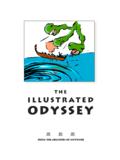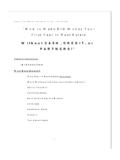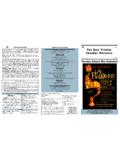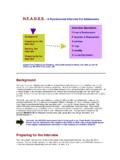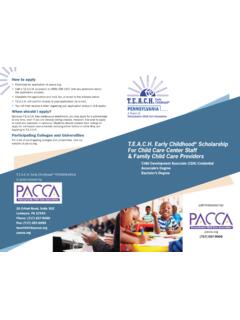Transcription of M a k e m oney gb y g r o win m u s h r ooms
1 Make money b y growing mushrooms FAO Diversi cation booklet 7. Diversi cation booklet number 7. Make money b y growing mushrooms Elaine Marshall and N. G. (Tan) Nair Rural Infrastructure and Agro-Industries Division Food and Agriculture Organization of the United Nations Rome 2009. The views expressed in this publication are those of the author(s). and do not necessarily re ect the views of the Food and Agriculture Organization of the United Nations. The designations employed and the presentation of material in this information product do not imply the expression of any opinion whatsoever on the part of the Food and Agriculture Organization of the United Nations (FAO) concerning the legal or development status of any country, territory, city or area or of its authorities, or concerning the delimitation of its frontiers or boundaries.
2 The mention of speci c companies or products of manufacturers, whether or not these have been patented, does not imply that these have been endorsed or recommended by FAO in preference to others of a similar nature that are not mentioned. All rights reserved. Reproduction and dissemination of material in this information product for educational or other non-commercial purposes are authorized without any prior written permission from the copyright holders provided the source is fully acknowledged. Reproduction of material in this information product for resale or other commercial purposes is prohibited without written permission of the copyright holders. Applications for such permission should be addressed to: Chief Electronic Publishing Policy and Support Branch Communication Division FAO Viale delle Terme di Caracalla, 00153.
3 Rome, Italy or by e-mail to: FAO 2009. Table of contents Preface v Acknowledgements vii Introduction 1. Contribution to livelihoods 1. Purpose of booklet 2. Mushrooms and sustainable livelihoods 3. Nutritional value 3. Medicinal value 4. Income bene ts 5. Livelihood opportunities 7. Essentials of mushroom cultivation 9. Life cycle of a mushroom 9. Growing systems 9. Key steps in mushroom production 13. Scale of production 17. Species selection 18. Key species and their cultivation methods 18. Assets required for mushroom cultivation 25. Natural assets 25. Social assets 27. Human assets 27. Physical assets 28. Financial assets 30. Summary 30. Strategies for successful and sustainable mushroom trade 31. Marketing channels 31. Marketing strategies 31. Processing 33. Organization 34. Accessing market information 34.
4 Education, business skills and a willingness to take risks 34. Diversi cation options 36. Sustainable mushroom trade 36. Support services to help promote mushrooms as a source of livelihood 39. Public policy 39. Technical support and training in cultivation and processing 40. Business and entrepreneurial skills 41. Market information 41. Financial services 41. Organizational options 41. Role of advisor 42. Opportunities and Challenges 43. Opportunities 43. Challenges 44. Selected further reading 47. Sources of further information and support 51. Table of contents Preface The purpose of the FAO Diversi cation booklets is to raise awareness and provide decision support information about opportunities at farm and local community level to increase the incomes of small-scale farmers. Each booklet focuses on a farm or non-farm enterprise that can be integrated into small farms to increase incomes and enhance livelihoods.
5 The Make money by growing mushrooms enterprises pro led in the FAO Diversi cation booklets selected are suitable for smallholder farmers in terms of resource requirements, additional costs, exposure to risk and complexity. The products or services generated by the enterprises are suitable for meeting demand on a growing, or already strong, local market and are not dependent on an export market. The main target audience for these booklets are people and organizations that provide advisory, business and technical support services to resource- poor small-scale farmers and local communities in low- and middle-income countries. It is hoped that enough information is given to help these support service providers to consider new income-generating opportunities and how these might enable small-scale farmers to take action.
6 What are the potential bene ts? What are farmer requirements and constraints? What are critical success factors'? The FAO Diversi cation booklets are also targeted to policy-makers and programme managers in government and non-governmental organizations. What actions might policy-makers take to create enabling environments for small-scale farmers to diversify into new income-generating activities? The FAO Diversi cation booklets are not intended to be technical how to do it' guidelines. Readers will need to seek more information or technical support, so as to provide farmer advisory and support activities relating to the introduction of new income-generating activities. To assist in this respect, v each booklet identi es additional sources of information, technical support and website addresses. A CD has been prepared with a full series of FAO Diversi cation booklets and relevant FAO technical guides, together with complementary guides on market research, nancing, business planning, etc.
7 Copies of the CD are available on request from FAO. FAO Diversi cation booklets can also be downloaded from the FAO Internet site. If you nd this booklet of value, we would like to hear from you. Tell your colleagues and friends about it. FAO would welcome suggestions about possible changes for enhancing our next edition or regarding relevant topics for other booklets. By sharing your views and ideas with us we can provide better services to you. vi Acknowledgements Gratitude is owed to Divine N. Njie, Agro-industries Of cer and Alexandra R ttger, Agribusiness Economist, Rural Infrastructure and Agro-industries Division (AGS), FAO, for providing input, reviews and support to the various drafts of this booklet. Thanks are also owed to Siobhan Kelly, Agribusiness and Enterprise Development Of cer (AGS), FAO, for carefully reviewing the Make money by growing mushrooms nal draft version of this booklet.
8 Acknowledgements for the series Gratitude is owed to Doyle Baker, Chief, Rural Infrastructure and Agro- Industries Division (AGS), FAO, for his vision, encouragement and constant support in the development of the FAO Diversi cation booklet series. Thanks are also due to Josef Kienzle, Agro-Industries Of cer, AGS, FAO, for his patience, commitment, and contributions to the production and post-production of the series. Clare Bishop-Sambrook, principal editor of the series, provided technical support and guidance, both during the development and nalization of the booklets. Martin Hilmi provided both technical and editorial inputs and managed the post-production phase of the series. Fabio Ricci undertook the design and layout of the booklets and desktop publishing. vii Introduction There are hundreds of identi ed and temperate zones, including the species of fungi which, since time Common mushroom (Agaricus), immemorial, have made a signi cant Shiitake (Lentinus), Oyster global contribution to human food (Pleurotus), Straw (Volvariella), and medicine.
9 Some estimate that the Lion's Head or Pom Pom (Hericium), total number of useful fungi de ned Ear (Auricularis), Ganoderma Make money by growing mushrooms as having edible and medicinal value (Reishi), Maitake (Grifola frondosa), are over 2 300 species. Although Winter (Flammulina), White jelly this contribution has historically (Tremella), Nameko (Pholiota), been made through the collection of and Shaggy Mane mushrooms wild edible fungi, there is a growing (Coprinus). Commercial markets interest in cultivation to supplement, are dominated by Agaricus bisporus, or replace, wild harvest. This is a Lentinula edodes and Pleurotus spp, result of the increased recognition which represent three quarters of of the nutritional value of many mushrooms cultivated globally. species, coupled with the realization of the income generating potential Contribution to livelihoods of fungi through trade.
10 In addition, Mushroom cultivation can help where knowledge about wild fungi reduce vulnerability to poverty and is not passed on within families or strengthens livelihoods through throughout communities, people the generation of a fast yielding have become more reluctant to and nutritious source of food and wild harvest and prefer to cultivate a reliable source of income. Since mushrooms instead. it does not require access to land, Cultivated mushrooms have mushroom cultivation is a viable now become popular all over the and attractive activity for both rural world. There are over 200 genera of farmers and peri-urban dwellers. macrofungi which contain species Small-scale growing does not include of use to people. Twelve species are any signi cant capital investment: commonly grown for food and/or mushroom substrate can be prepared medicinal purposes, across tropical from any clean agricultural waste 1.










